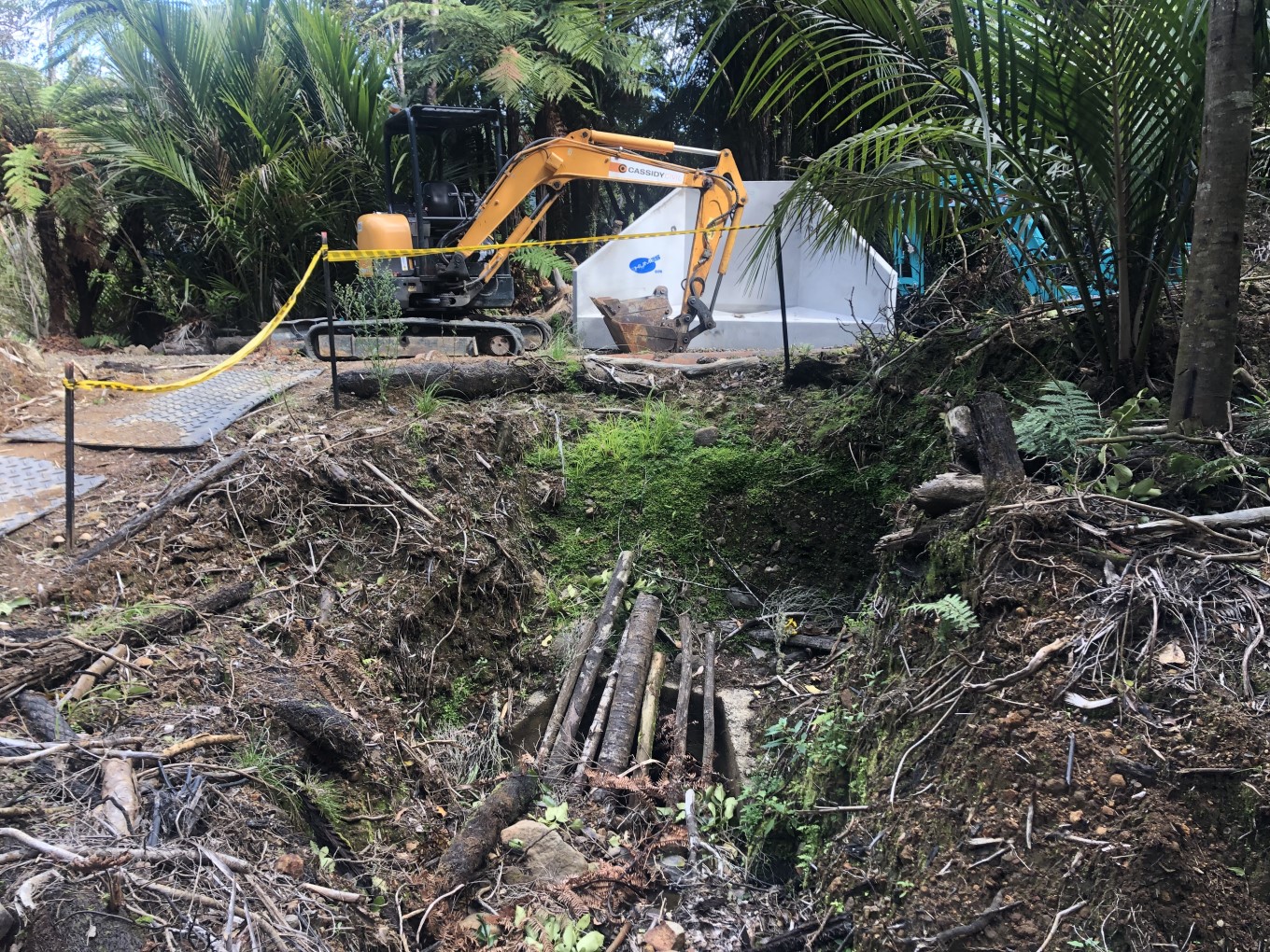Watercare is more than doubling the number of crews working on flood and cyclone recovery works around the Waitākere dams to deliver crucial repairs before the thick of winter sets in.
Last year’s Auckland Anniversary Floods and Cyclone Gabrielle events caused extensive damage with landslips taking out watermains, wastewater pipes and causing issues in our dam catchments.
Watercare asset upgrade and renewals manager Suzanne Lucas says they’ve increased the number of crews working in the western dam catchments from two to five to enable them to deliver more projects while the weather is favourable.
“Our teams are finishing off the construction of the retaining walls to protect the Upper Nihotupu and Upper Huia raw watermains from landslips.
“Having extra hands on deck will enable us to finish off the three new culverts and stormwater lines, which will redirect flows from around the raw watermain away from landslip-prone areas. We’re also reinstating streams and a stormwater basin that was wiped out by the landslips.
“Our western dams normally supply about 20 per cent of Auckland’s drinking water, so we’re working incredibly hard to fix the damage caused by last year’s weather events and at the same time make our infrastructure more resilient.”
Lucas says ground crews have already cleared more than 20 slips as well as built back many of the pipe bridges, culverts and retaining walls lost in the severe weather events to a more resilient standard.
“I am extremely impressed with our crews; they have put in an incredible effort to stabilise our sites and get the repairs done in the last eight months.”

Lucas says the repairs are challenging due to their remoteness and difficult accessibility.
“As a result, we had to think outside the box about how we transport specialist equipment and materials in as well as be more innovative with our designs for the repairs.
“The solution for getting around this issue was to helicopter in the specialist equipment and materials like gravel, pipework, and excavators.
“However, since a standard helicopter could only safely transport equipment or machines up to 1.5 tonnes we could only bring in very small machinery.”
Lucas says this all changed in March, thanks to the assistance of a Black Hawk helicopter that could transport equipment weighing over three tonnes.
“Having the assistance of a Black Hawk meant we could transport heavier equipment like a 3.5 tonne excavator, enabling our crews to complete the earthworks much more quickly and cost-effectively.
“The Black Hawk will be returning in July to remove equipment as we shut down for the winter."
Lucas says work will be limited during the winter period as the risk of land instability tends to be much greater due to the increase of rainfall and high winds.
“We have strict protocols we need to follow to keep our teams safe. Given the risk of land instability, rainfall and wind thresholds mean we can’t send people in if they’re exceeded – for example, if there’s more than 50mm of rain in 48 hours, work can’t proceed.
“Besides the weather, the days are much shorter in winter, which doesn’t give us much of a window to get things done on the ground.
“We'll still have a crew who can monitor the sites for slips and critical infrastructure, but our focus will be on finalising the designs for the remaining repairs needed in our dam catchments so we’re all ready to go when next summer comes.”



